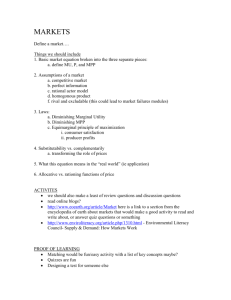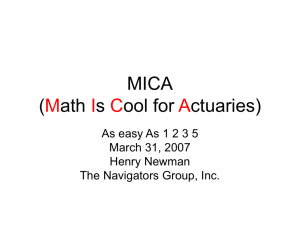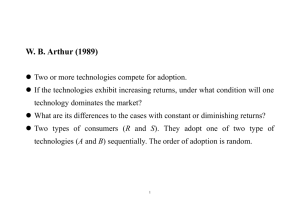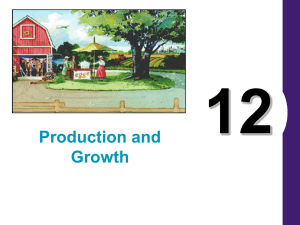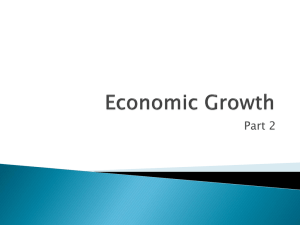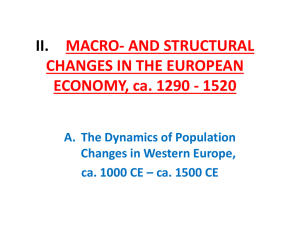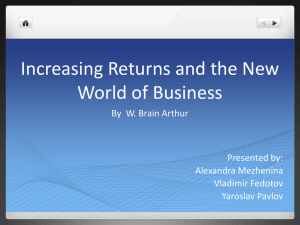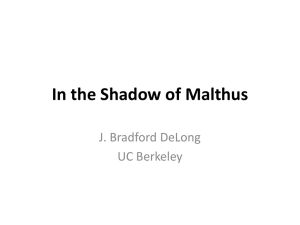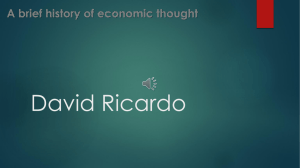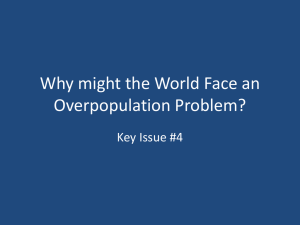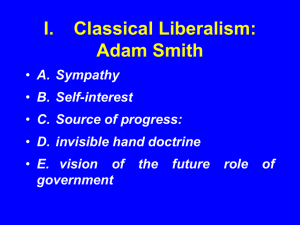The Law of Diminishing Returns
advertisement
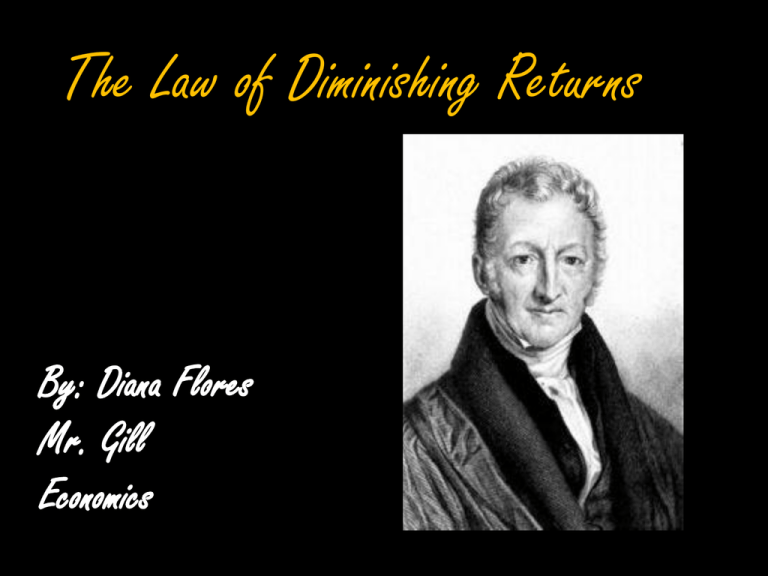
The Law of Diminishing Returns By: Diana Flores Mr. Gill Economics The Beginnings of the Theory… I. Turgot was the French Adam Smith. His Reflections on the Production and Distribution of Wealth, which predated Smith’s The Wealth of Nations by ten years, argues against government intervention in the economic sector. Turgot recognized the function of the division of labor, investigated how prices were determined, and analyzed the origins of economic growth. Turgot was a leading Physiocrat who attempted to reform the most stifling of his government’s economic policies. The first recorded expression of the law was by Anne Robert Jacques Turgot A member of an 18th-century group of French economists who (1727-1781) believed that agriculture was the source of all wealth and that agricultural products should be highly priced. Advocating adherence to a supposed natural order of social institutions, they also stressed the necessity of free trade Reverend Thomas Malthus (1766-1834) • Like the Physiocrats, Malthus applied the notion of diminishing returns to agriculture. He stated: When acre has been added to acre till all the fertile land is occupied, the yearly increase of food must depend upon the melioration [improvement] of the land already in possession. This is a fund which, from the nature of all soils, instead of increasing, must be gradually decreasing • Malthus introduced the idea when constructing his famous population theory. The theory argues that population grows geometrically, while food production can, at best, increase arithmetically. The eventual result is that the population outgrows its food supply, and people are forced to live at subsistence. The limits to food production stem from diminishing returns. In English Please? What he is trying to say is that.. Population grows Geometrically (assuming couples had two or more children) 2,4,8,16,32,64…. While capacity of land to produce food tended to increase arithmetically (the ability to cultivate more land was less rapid) 2,4,6,8,10,12 In Conclusion… • The inevitable conclusion is that population growth rate outstripped the capacity of land to provide food for the people. Therefore, creating starvation and famine. The theory was based upon what has become known as diminishing returns. Here’s another way of explaining this: http://www.youtube.com/watch?v=MtuCPRlTl38 So Does It Work? Yes And No According to Malthu’s law, by now the all population would be gone or starving, but. Has the population of the world or regions show signs of cataclysmic famine? On a global scale one has to conclude not. The technological changes that have enabled the development of improved fertiliser and pesticides and more sophisticated machinery generally ensured that agricultural yields have increased dramatically. The Flaws… Diminishing Returns occurs in the short run when one factor is fixed (e.g. Capital) Why does diminishing returns occur? This is because, if capital is fixed, extra workers will eventually get in each other’s way as they attempt to increase production. E.g. think about the effectiveness of extra workers in a small café. If more workers are employed, production could increase but more and more slowly. However, there are only so many chopping boards and space to make sandwiches. An extra worker may just struggle to find a space to make sandwiches. Other People Who Used The Diminishing Law Of Returns • David Ricardo (1772-1823), another classical economist and close friend of Malthus, also contributed to developing the law of diminishing returns. Referring to it as the "intensive margin of cultivation," Ricardo demonstrated how the addition of labor and capital to a fixed piece of land would yield successively smaller increases in output. In the absence of diminishing returns, you could grow the world's food supply in a flower pot. Ricardo used diminishing returns to explain his theory of rent. If prices for agricultural output are based on the cost of producing on the most intensively used land, the surplus accruing to less intensively used land becomes rent for the land owner Citations • http://glencoe.mcgrawhill.com/sites/0025694212/student_view0/chapter8/origin_of_the_idea.ht ml • http://www.economicshelp.org/microessays/costs/diminishing-returns.html • http://suit-n-tie.hubpages.com/hub/understanding-diminishing-returns
